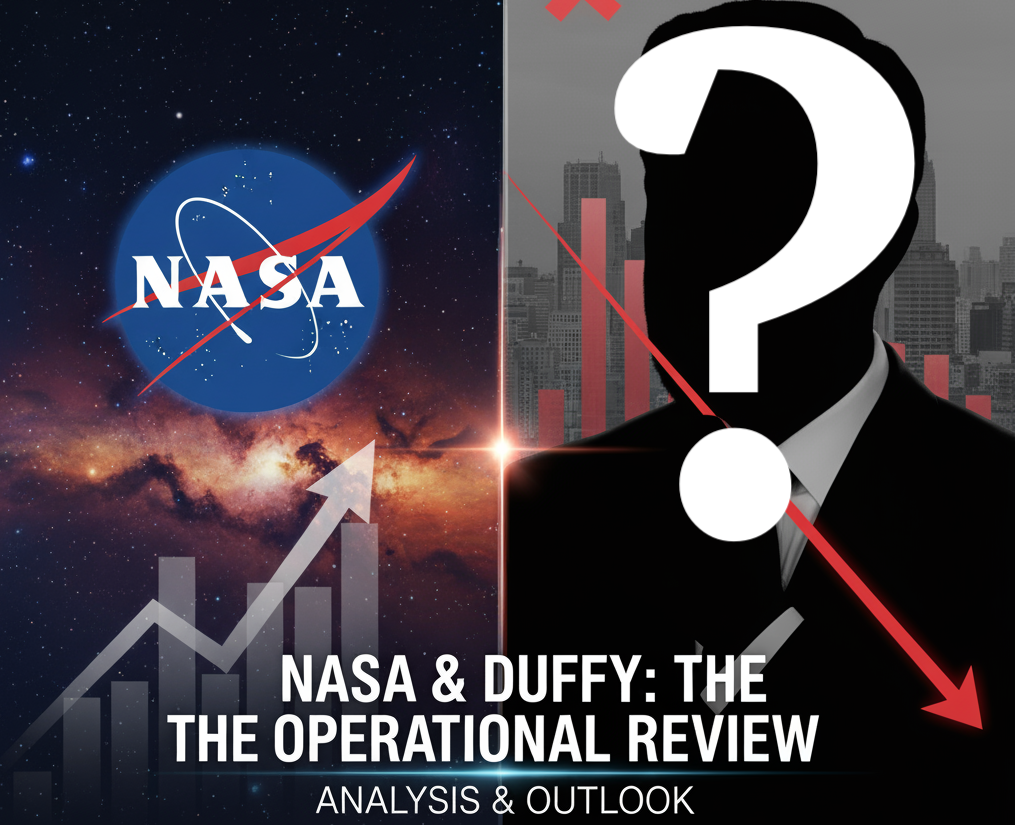The following article synthesizes publicly available information (official bios, news reporting, technical analyses and statements from stakeholders) about Sean P. Duffy’s career, the concrete policy and program changes he has enacted or proposed while serving as Acting Administrator of NASA, and the major strands of debate those actions have generated. The piece is deliberately neutral — it reports facts, dates, direct quotations where available, and the positions taken by different actors so readers can reach their own judgments.
I. Short professional biography (career highlights)
Sean P. Duffy is a lawyer-turned-politician and cabinet official. He served as a U.S. Representative (2011–2019) and earlier as a county district attorney. In January 2025 he became U.S. Secretary of Transportation; on 9 July 2025 he was named Acting Administrator of NASA in addition to his Transportation role, a dual assignment reflected in official agency material.
Before elective office Duffy’s biography includes private-sector and media engagements; public profiles also note non-political activities (for example, competitive lumberjack sports and television appearances), which have been repeatedly referenced in commentary about his background.
II. Concrete policy and program actions since becoming Acting Administrator
Below are the most widely reported, verifiable changes and proposals associated with Duffy’s tenure (dates given where available):
• High-level reorientation of priorities — On multiple public occasions Duffy stated that NASA’s emphasis would move toward human exploration (Moon and Mars) and that many Earth-facing science activities previously prioritized by the agency would be “moved aside” in favor of exploration objectives. Reported remarks and internal guidance indicate a clearly stated shift in top-line priorities.
• Budget proposals and program funding — The Administration’s FY-2026 budget proposal (as presented publicly) included large reductions in the agency’s science account in aggregate and particularly deep cuts to Earth science programs, triggering public debate about the continuity of long-running climate and environmental monitoring efforts. Independent reporting has documented the scale of proposed cuts and the programs named as affected.
• Procurement and competition for lunar lander work — Duffy publicly said NASA would seek additional competitive bids for the Artemis lunar lander work, signaling that previously awarded contracts (notably the SpaceX Human Landing System contract) could face renewed competition or reassessment. Major news outlets reported that the agency opened the Artemis 3 lander opportunity to potential rivals.
• Administrative reorganizations and new directives — In the months after his appointment internal directives and policy documents were issued (for example, changes regarding commercial space station policy and other organizational rules). These documents and subsequent reporting indicate a managerial push to alter how NASA organizes and prioritizes commercial partnerships and program oversight.
III. Technical implications: missions, data continuity, and workforce
This section summarizes the technically concrete consequences discussed in reporting and technical commentary.
• Earth-observing missions and data continuity — NASA operates long-running satellite missions providing climate, carbon cycle, cryosphere and atmospheric observations that underpin academic research and operational services (e.g., weather and hazard forecasting). Reported cuts to Earth science budgets and program cancellations raise questions about continuity (gaps in time-series), instrument replacement schedules, and mission lifetimes for weather-critical satellites; analysts warn that losing continuity can have effects measured in years or decades.
• Human spaceflight schedules and contractor dynamics — Opening competition for lunar lander work changes program risk profiles and schedules: new procurement competitions can introduce delays while potentially reducing single-vendor dependence. That tradeoff — competition vs schedule certainty — is one of the practical engineering and programmatic debates now unfolding. Public commentary from industry leaders and NASA officials highlights both the potential cost-savings and the risk of slippage if transition timing is not carefully managed.
• Workforce structure and institutional knowledge — Reported reorganizations and personnel reductions or hiring constraints have prompted concern inside the agency about retention of domain expertise (discipline-specific engineers and Earth-science instrument teams), continuity of mission operations, and the institutional memory required for complex, multi-decadal projects. Groups of current and former employees have publicly articulated these concerns (see Section IV).
IV. Sociological and political dimensions of the debate
The reactions to Duffy’s leadership fall into identifiable socio-political camps; listing them helps explain the dynamics and why the debate is charged.
• Internal dissent and employee advocacy — A notable, organized reaction took the form of a letter and public declaration signed by hundreds of current and former NASA employees (the “Voyager Declaration” as reported) expressing alarm about budget cuts, restructuring, and perceived politicization. Signatories warned about safety, mission capability and the long-term health of the agency. NASA’s communications staff responded publicly to affirm safety-critical roles would be protected.
• Industry reactions and contractor tensions — Major contractors and commercial space companies have reacted in different ways. For example, public exchanges between senior industry figures and Duffy have become visible and pointed (including social-media clashes), reflecting competition for large contracts and differing views on procurement approaches. These tensions reflect deeper questions about the public–private division of labor in U.S. space policy.
• Legal, congressional and watchdog scrutiny — Journalistic and independent analyses have raised questions about whether some budgetary or procedural moves skirted ordinary congressional oversight or used the President’s budget presentation to effect programmatic change. These critiques have led to reporting that cites legal and process concerns; Congressional oversight and hearings are among the institutional responses likely to follow.
• Public political discourse — Media coverage and opinion pieces frame the developments within larger partisan narratives (administration priorities, climate policy debates, and industrial policy). The controversy therefore carries both technical stakes (missions, data) and symbolic stakes (what NASA represents publicly). Different media outlets emphasize different aspects, and social-media commentary has amplified both technical and personality-based critiques.
V. Representative direct quotations and dates (for context)
• Duffy named Acting Administrator: July 9, 2025 (official NASA and DOT materials).
Public remark reported in August 2025: Duffy said “All the climate science and all of the other priorities that the last administration had at NASA we’re going to move aside… all of the science that we do is going to be directed towards exploration,” a statement widely reported and cited in technical critiques.
October 2025 reporting: Reuters and other outlets covered Duffy’s announcement that NASA would seek rival bids for Artemis lunar lander work and the ensuing public clash with private sector leaders.
VI. Points of continued uncertainty and where to look next
• Budget outcomes: presidential budget proposals are a starting point; final appropriations decisions are made by Congress. The ultimate impact on specific missions depends on appropriation language and congressional oversight (watch the House and Senate appropriations process).
• Procurement timelines: opening competitions can be announced rapidly, but award decisions, technical reviews, and integration testing take months to years; technical schedule risk should be monitored via NASA program offices and contractor filings.
• Internal workforce effects: personnel moves and morale effects are observable over time in staffing data, program deliverables, and internal communications; employee letters and whistleblower statements are partial early indicators but not definitive measures.
VIII. Closing (neutral frame)
The situation combines programmatic, legal, managerial and symbolic elements: concrete procurement and budget actions with measurable technical consequences, plus sociological reactions from staff, contractors and the wider public. The facts above document what actions were taken or proposed, when they occurred, and how multiple stakeholder groups have responded. Readers and stakeholders must weigh the technical tradeoffs (for example, competition vs schedule, or exploration vs continuous Earth observations) alongside political and institutional considerations to draw conclusions about long-term outcomes.



